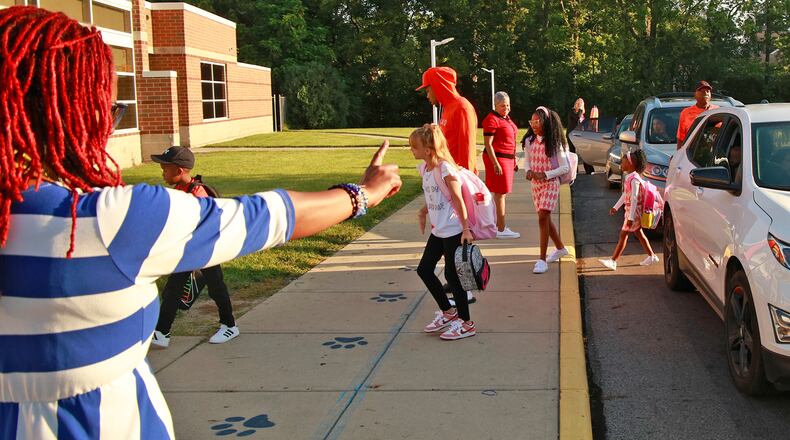Superintendent Bob Hill has been a critic of the state’s report card process.
“As is historically the case with urban districts of similar size to the Springfield City School District, it painted a misleading picture of the progress that is actually being made within the walls of our school buildings each day,” Hill said.
Springfield schools scored a 2 star rating overall, the same as last year, and improved to a 2 star rating in progress, compared to a 1 last year. They also scored a 2 each in achievement, gap closing and graduation, and a 1 in early literacy, also the same as last school year.
But the more granular data behind those ratings showed improvement in several cases — the district’s performance index score increased to 53.3% in 2023-24 from 52.6% in 2022-23, early literacy rose to 57.1% from 53.7%, and five-year graduation rate rose to 90.7% from 82.1%.
And while the overall rating stayed at 2 stars, the overall rating points achieved rose from 1.25 to 1.465.
“Despite the numerous challenges our students encounter, including the well-established link between poverty and academic achievement, our committed team of educators and support staff work relentlessly to provide the very best for our students — offering high-quality education, exceptional educators who care and comprehensive support systems,” Hill said.
The two areas where the district’s scores decreased year-over-year were in gap closing (down to 17.9% from 29.9%) and in four-year graduation rate (fell from 85.6% to 80.6%).
Hill said Springfield schools saw increased student performance in 13 of the 20 tested areas, and several buildings are “projected to meet state standards” with their overall ratings. These include Fulton, Simon Kenton and Snowhill Elementary Schools, all of which received 3 stars, and Horace Mann Elementary School which received 3.5 stars. A 3 star rating is considered meeting state standards.
Horace Mann earned the highest rating the state offers in year-over-year progress, with 5 stars, followed by Fulton with a 4, according to the school-by-school data. Snowhill scored the highest in achievement with a 3, and Fulton and Perrin Woods Elementary School scored the highest in gap closing with a 3.
However, Hill argued that the district “significantly increased performance” in gap closing, a measure that shows how well schools are meeting the performance expectations for students, for English learners, chronic absenteeism, math and English Language Arts progress.
“The correlation between improved student performance metrics and the reduction in chronic absenteeism is significant. Our team is excited to build on this positive momentum,” Hill said, explaining that the state’s absenteeism measure decreased from 43% in 2023 to 38% in 2024.
Credit: Bill Lackey
Credit: Bill Lackey
Hill said in 2020, the chronic absenteeism rate was 21%, but that increased to 57.5% in 2021 during the COVID pandemic.
“Since then, our district and building teams have worked diligently to decrease those numbers to pre-pandemic statistics,” Hill said — by putting more effective data management systems in place, enacting consistent messaging to families, adopting a mindset of goal setting and accountability and leaning into the work of attendance officers and support staff.
“Our kids cannot learn if they are not at school, and the teams in place within our district continue to go over and beyond to ensure that there are limited barriers for families that prohibit families from getting their children to school on time, each day,” he said.
The Springfield school district serves 7,700 students across 17 buildings, and is the most diverse in Clark County with demographics of 38% White, 34% Black, 15% Multiracial, 12% Hispanic, and 1% Asian or Pacific Islander. It also continues to increase in English Learners, serving over 1,000 of those students, which is 15% of the total student population. The district also serves over 400 homeless students.
Credit: Bill Lackey
Credit: Bill Lackey
About the Author




